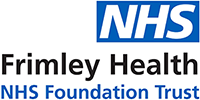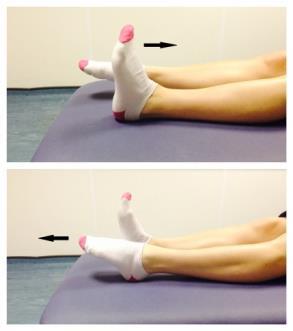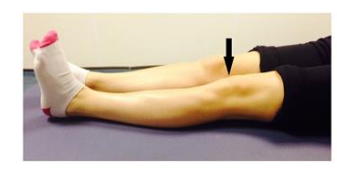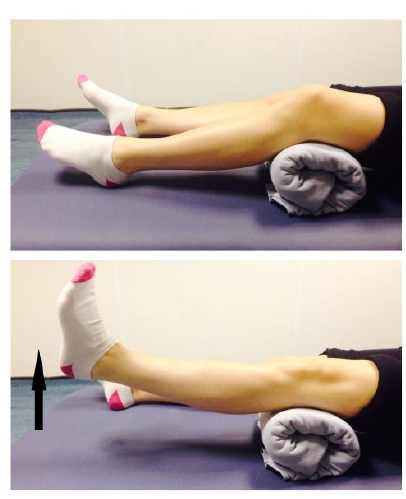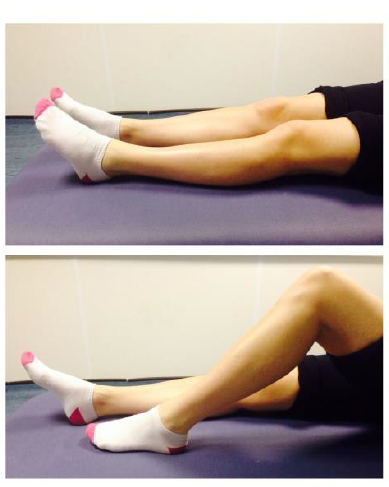Knee Soft Tissue Injury
NHS Virtual Fracture Clinic - Soft tissue knee injury
Healing:

It can take 6-12 weeks for this injury to heal, depending on the severity of the injury.
Smoking will slow down your healing. We would advise that you stop smoking while your fracture heals. Talk to your GP or go to www.smokefree.nhs.uk for more information.
Pain and swelling:
Your knee will be swollen and you will have some pain. Swelling is often worse at the end of the day. Taking pain medication, elevating your knee and using ice or cold packs will help. More information is below.
It is normal to have mild pain and swelling for 3-6 months.
Walking and your brace:

You are allowed to put weight through your leg. You may find it easier to use crutches in the early stages. You will need to pace your activity until your pain and movement is better.
You may have been given a knee brace in A&E. This can be used to help manage your symptoms in the early stages. Try to stop using the brace as soon as you can.
Exercises:
It is important to start exercises as soon as possible. Instructions are below.
Follow up:
Routine follow up appointments are not always needed after a sprain to the knee. Most injuries recover well with self-management. If you have significant pain, instability or still need your brace and crutches 3 weeks after your injury, please contact the Virtual Fracture Clinic. A further consultation may be required.
Any questions:
If you are concerned about your symptoms, are unable to follow this rehabilitation plan or have pain other than at the site of your injury please contact the Virtual Fracture Clinic team.
Caring for your injury
If provided, use your brace for comfort. This video provides you with a guide for fitting your brace: https://vimeo.com/386673392. Try to stop using the brace as soon as you can. Remove your brace to wash, dress and do your exercises.
Using a cold pack will help with your pain and swelling. You can use an ice pack or bag of frozen peas wrapped in a damp towel. Put this on your foot for up to 15 minutes every few hours. Make sure the ice is not in direct contact with your skin.
Try to rest your knee, especially in the first 24-72 hours. Raise your foot on a stool or cushions to that it is above the level of your hip. This will help to reduce your swelling.
Exercises:
Early movement of the ankle and foot is important to promote circulation and reduce the risk of developing a Deep Vein Thrombosis (blood clot).
Do these exercises 3-4 times a day. Start straight away, you do not need to push into pain.
|
1. Rest with your leg supported. 2. Point your foot up and down. Repeat this 10 times. |
Ankle Exercises
|
| 3. Rest with your leg supported and straight. Gently tense the muscles in your thigh and try to straighten your knee further. Hold for 5 seconds and repeat 7-10 times. |
Static Quadriceps Exercise
|
|
4. Place a rolled up towel or small pillow under your injured knee. 5. Tense your thigh muscle and try to straighten your knee. Keep the back of your knee in contact with the towel/pillow. 6. Repeat 10 times. If you can, try to hold your knee straight for 5 seconds. |
Inner Range Quads Exercise
|
|
7. Sit or lie with your legs out stretched 8. Bend and straighten your injured leg. Go as far as you feel comfortable. 9. Repeat 7-10 times |
Knee Flexion and Extension
|
|
10. When you can do the first knee bending exercise easily, you can progress to this exercise. 11. Sit on a chair or on the edge of your bed. Bend and straighten your knee, lifting your heel off the floor. 12. Repeat this 10 times. 13. If you can, try holding your knee straight for 5 seconds. |
Seated knee flexion and extension:
|
Frequently asked questions
